Great Smoky Mountains National Park
National Park Service
U.S. Department of the Interior



National Park Service
U.S. Department of the Interior


The Official Newspaper of the Smokies • Summer 2025

Hello! Welcome to Great Smoky Mountains National Park. As a park ranger interpreter, I help connect visitors with the natural and cultural resources of the park in hopes of inspiring stewardship of our public lands. As interpreters, we don’t interpret a language—we interpret the park, its resources, and its history. We aim to connect visitors with these special places.
Since 2023, GSMNP has been working to make outdoor recreation more available for visitors of all abilities. The park is offering several adaptive ranger-led programs that allow visitors of all abilities and their families to explore the park. Park rangers lead hiking, biking, and kayaking opportunities using adaptive equipment, such as off-road wheelchairs and handcycles. We also offer an adaptive
New ranger crew works to prevent backcountry emergencies
Over the past year, some Smokies visitors may have noticed more park rangers at their favorite trailhead. Many of these rangers are part of the new Preventative Search and Rescue team—or PSAR—an elite group of first responders that aims to stop emergencies before they start, and respond to them if they do.
The Smokies PSAR team includes about 13 National Park Service employees, plus a dozen highly skilled volunteers. Created in 2023, it expanded in 2024 using funds from the Park It Forward parking tag program and additional support from Friends of the Smokies. The team has since interacted with thousands of visitors and responded to hundreds of incidents.
“By and large the program has been a major success for the park,” said Supervisory PSAR Ranger Joshua Albritton. “It’s leading to better out-
comes for visitors, which is the goal.”
In addition to participating in search and rescue missions when a park visitor faces a backcountry emergency, PSAR rangers patrol popular trails, trailheads, and visitor centers, sharing information about trip planning and hiking safety.
Rangers might point out lapses in preparation that could lead to an emergency rescue later on—flip flops instead of hiking boots, an overly ambitious itinerary, insufficient food or water—giving visitors a chance to address the issue before walking into the woods. On the trail, rangers might offer a bottle of water to a dehydrated hiker, advice about conditions ahead, or a rapid response to someone in need of medical attention.
To stay safe during your next adventure, use the guide at nps.gov/ grsm/planyourvisit/hikingsafety.htm.

PARKING TAG REQUIRED!
Parking in the Smokies for more than 15 minutes requires a valid parking tag (annual tag pictured).

Sugarlands, Oconaluftee, and Cades Cove: open 9 a.m–5 p.m. June through September. Cades Cove open 7 a.m.–3 p.m. on Wednesdays starting June 18.
Kuwohi: open 9:30 a.m.–6:00 p.m. June through September.
GSM Institute at Tremont: open 10 a.m–4 p.m. Tuesday–Saturday.
• Cades Cove Loop Road is closed to vehicles on Wednesdays from June 18 through September 24 to allow for non-motorized recreation.
• Heintooga/Round Bottom Road and Straight Fork Road are closed due to hurricane impacts.
• All park roads are subject to temporary closure during dangerous driving conditions. Visit nps.gov/grsm and click “Alerts.”
Local shuttle services offer convenient transportation to and from the park’s most iconic destinations. Routes, schedules, pricing, and pick-up/drop-off locations vary. Visit go.nps.gov/grsmshuttles.
In summer, the Smokies are often hot, hazy, and humid by mid-June. Most precipitation occurs as afternoon thundershowers.
By mid-September, a pattern of warm, sunny days and crisp, clear nights begins. However, cool, rainy days may also occur.
See pages 4, 5, and 7 for ranger activities, inquire at visitor centers, or visit go.nps.gov/grsmcalendar for a full calendar of events.
The National Park Service maintains developed campgrounds at ten locations in the park. There are no showers, and hookups are available only at Look Rock Campground (ten campsites include electric and water hookups). Circuits for special medical uses are offered at Cades Cove, Elkmont, and Smokemont.
Campsite reservations are required at all park campgrounds. Sites may be reserved up to six months in advance. Camping is permitted only in designated sites.
Make your reservation online at recreation.gov or call 877.444.6777.
Site occupancy is limited to six people and two vehicles (a trailer is considered one vehicle). The maximum stay is 14 days.
All campgrounds are scheduled to be open for the summer. Campsites for larger groups are available at Cades Cove, Deep Creek, Elkmont, and Smokemont. Reservations are required and can be made one year in advance. Visit nps.gov/grsm for the most up-to-date information.
To prevent the spread of destructive pests, only USDA- or state-certified heat-treated firewood may be brought into the park. Campers may gather dead and down wood in the park for campfires.
Picnic areas at Cades Cove, Chimneys, Deep Creek, Greenbrier, and Metcalf Bottoms are open. However, Big Creek, Collins Creek, Cosby, Look Rock, Twin Creeks, and Heintooga picnic areas remain closed at this time. Picnic pavilions may be reserved for a fee at recreation.gov. Some restroom facilities at picnic areas may be closed.
LeConte Lodge (accessible by trail only, closes November 15) provides the only lodging in the park. Reservations required. 865.429.5704, lecontelodge.com
There are no gas stations, charging stations, showers, or restaurants in the national park. Limited food options are available in visitor centers and camp stores.
Reserve the Appalachian Clubhouse or Spence Cabin at Elkmont for daytime events at recreation.gov. Cabin and clubhouse close October 31.
Pets are allowed in campgrounds and along roads as long as they are restrained at all times. Pets are not allowed on park trails, except for Gatlinburg and Oconaluftee River trails. Pets must be kept on a leash no longer than six feet.

Most park roads are too narrow and heavily traveled for safe or enjoyable bicycling. Bicycles are permitted on park roads but prohibited on trails except Gatlinburg, Oconaluftee River, and lower Deep Creek and Indian Creek trails. Helmets are required by law for persons age 16 or under and strongly recommended for all.
Cades Cove Loop Road is open exclusively to cyclists and pedestrians on Wednesdays from June 18 through September 24. Bikes may be rented at the Cades Cove Campground Store 9 a.m.–4p.m. Bike rental opens early at 7 a.m. on vehicle-free Wednesdays. 865.448.9034.
Some 550 miles of park trails are open to horses. See park trail map for trails and rules. The Anthony Creek, Cataloochee, and Tow String horse camps are open. Camps at Big Creek and Round Bottom remain closed due to storm damage. Visit recreation.gov for availability.
Three concession horseback riding stables offer rides from March through November.
• Cades Cove 865.448.9009 cadescovestables.com
• Smokemont 828.497.2373
smokemontridingstable.com
• Sugarlands 865.436.5470 sugarlandsstables.com

Fishing is permitted year-round in the park, but a Tennessee or North Carolina fishing license is required. Either state license is valid throughout the park, and no trout stamp is required. Fishing with bait is prohibited. Special permits are required for the Qualla Boundary and Gatlinburg, and licenses are available in nearby towns. A free fishing map with a complete list of all park fishing regulations is available at visitor centers.
The park service maintains more than 100 campsites and shelters dispersed throughout the Smokies’ backcountry trail network. Although all overnight stays require a permit and reservation at a designated campsite, the greatest challenge might be deciding where to go. See below for help as you prepare for your next adventure:
1. Get the map. Go online to view the park’s official trail map (go.nps.gov/grsmmaps), which shows all park trails, campsites, and shelters. Park rules and regulations are also listed here. You can purchase the printed version of the trail map for $1 at any park visitor center or online at SmokiesLife.org.
2. Plan your trip. Call the park’s Backcountry Office from 8 a.m. to 5 p.m. or drop into the
office located within Sugarlands Visitor Center for trip-planning help. The office is open to visitors during visitor center hours. 865.436.1297.
3. Get a permit. Make your reservation and get your permit by phone or in person through the Backcountry Office at Sugarlands Visitor Center or online at smokiespermits.nps. gov.
Reservations and permits are required for all overnight stays in the backcountry. The cost is $8 per person per night. Reservations may be made up to 30 days in advance. Backcountry camping permit holders are not exempt from parking tag requirements.
Summer hikers should be especially aware of the dangers of dehydration, heat exhaustion, and hyponatremia—the combination of increased water intake and inadequate sodium and electrolyte levels. Drink when thirsty; rest and eat often. Always carry an ample supply of water, snacks, and sun protection. Know your limits. Reduce the risk of hypothermia, a danger even in summer, with layered clothing and rain gear.
See page 11 for more hiking tips and trip essentials.
The only two pet-friendly trails in the Smokies are the Gatlinburg Trail in Tennessee and the Oconaluftee River Trail in North Carolina.
Learn the BARK principles so you and your pet can have a safe and fun visit in the Smokies. Take the BARK pledge:
B ag and bin your pet’s waste
A lways leash your pet
R espect wildlife
K now where you can go

7–AUGUST 31, 2025
Event schedules are weather-dependent and subject to change. More programs listed on page 7. For a full list, inquire at a visitor center or visit: go.nps.gov/grsmcalendar
NORTH DISTRICT (near Gatlinburg, TN)
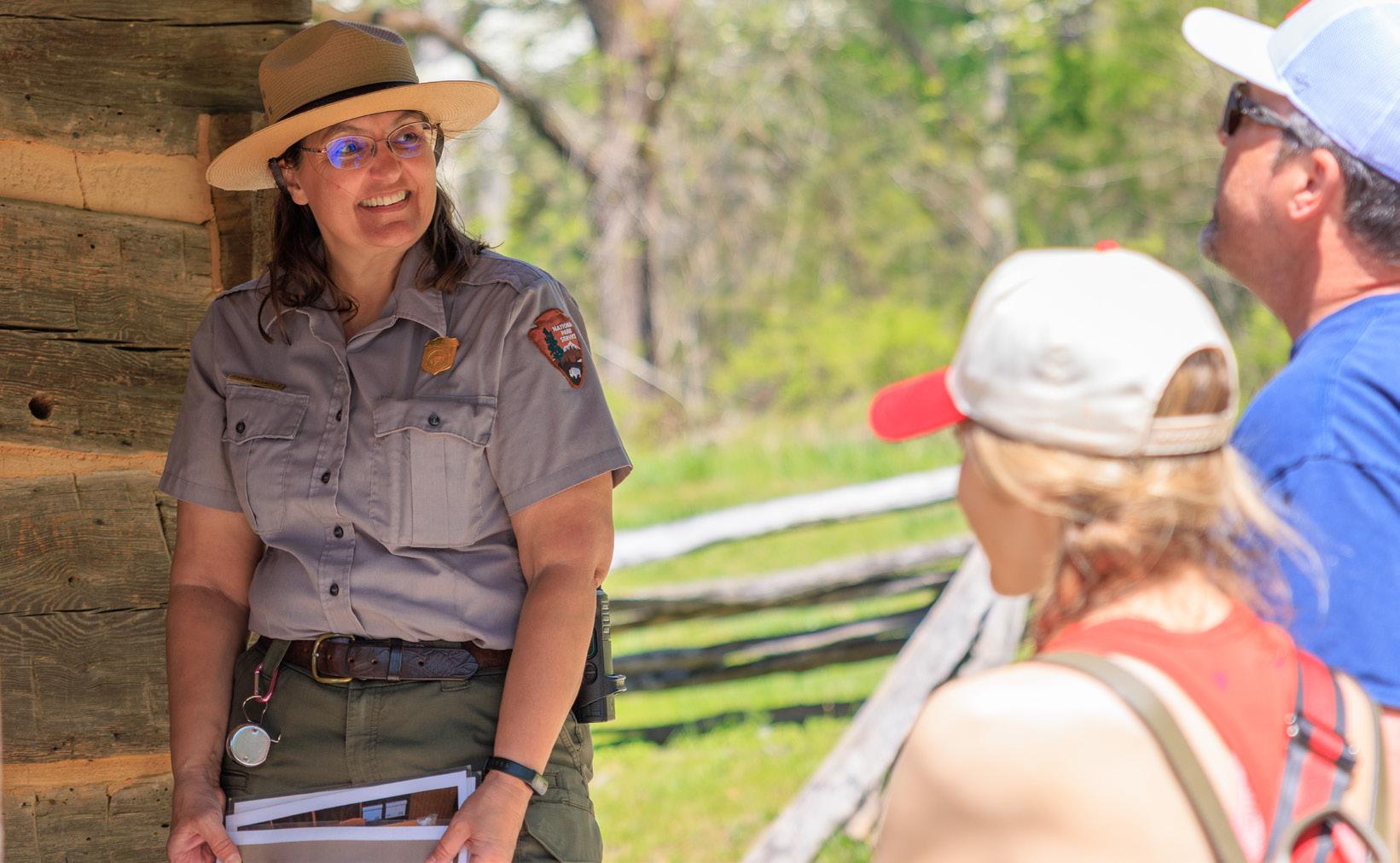
Ranger Jeanine Ferrence leads a program at John Oliver Cabin in
Junior Ranger Ramble: Join a ranger for a walk, talk, or guided activity to learn more about natural and cultural history and become a steward of the park. Topics vary daily. Check Sugarlands Visitor Center for more information.
Vital Signs of the Smokies: Join a ranger for a walk or talk about the Smokies’ “vital signs,” observations that can help us better understand the challenges this fragile ecosystem faces and appreciate the beauty around us.
Walker Sisters Hike: Take a walk through the woods to the Walker Sisters Cabin, learning about the communities, religion, education, and “modern” conveniences of the folks who once lived in these mountains.
Bear With Us!: Come learn all about an iconic symbol of Great Smoky Mountains National Park—black bears!
Hiking 101: Come hear from a ranger about tips, skills, and basics to help you experience the joys of hiking in Great Smoky Mountains National Park.
Porters Creek Hike: Ever wanted to be a history detective? Join a ranger in searching for signs of early Smokies settlers, learning about cultural and natural history along the way.
History of Daisy Town: Visit the popular Non-Ghost Town of the Smokies and learn about the community of Daisy Town before the Smokies became a park.
Stream Splashers: Embark on a hands-on splash in the water with a ranger to learn about the health and history of our Smokies streams. Water shoes recommended. Participation limited to 25. Weather-dependent.
(every other week)
SOUTH DISTRICT (near Cherokee, NC)
Wild about the Smokies: Get the inside scoop on where to spot wildlife like bears and elk—and how to do it safely. Discover why scientists study mammals, birds, amphibians, and other species living in the park.
Down on the Farm: Immerse yourself in Smokies history! Rangers and living history demonstrators will showcase skills like blacksmithing, fence-making, and hearth cooking on which families once depended to make their living in the Smokies. Program topic varies. Check Oconaluftee Visitor Center for more information.
Kuwohi Guided Hike: Walk through a unique spruce-fir forest on the Smokies’ tallest mountain and discover all this park has to offer. A ranger will guide this 1.5-mile hike leading to the majestic views atop Kuwohi Observation Tower.
Stream Splashers: Get ready for a splashing good time discovering the magic of local streams, learning about aquatic life, and connecting with the environment. Water shoes recommended.
Old-Time Music Jam: Join in with local musicians playing old-time songs on traditional Appalachian instruments such as the mountain dulcimer. All experience levels and instruments welcome.
Evening Program: Grab your chair or blanket and gather at the grassy area between C and D loop at Smokemont Campground for an unforgettable evening program featuring the ranger’s favorite Smokies topic.
COVE (near Townsend, TN)
Bear Aware: Join us in the picnic area for a short chat about bears in the Smokies, what to do if you see one, and how it takes all of us working together to keep them healthy and wild.
Drop into History: Watch (and possibly try) historic demonstrations related to life in Cades Cove. Offerings vary from day to day but may include blacksmithing, music, quilting, storytelling, doll-making, or weaving.
Cove Life: Step into the past and learn more about what it was like to live in the Cades Cove community by exploring the cabin where the Cove’s first permanent European settlers lived.
Stream Connections: Learn about and look for the critters found in park waterways while discovering what they reveal about the health of our streams. Be prepared to get wet. Closed-toed shoes recommended.
Milling Around: Visit the historic buildings in the mill area to learn how residents used innovative technology to make life in Cades Cove more comfortable and efficient.
Wild Things: Bring the whole family for an interactive experience to learn about some of the creatures that call Cades Cove home. Some programs ADA-accessible. Check visitor center for more information.
The Cove After Dark: Take an evening walk with a ranger to experience the sights and sounds of Cades Cove at night. If the clouds cooperate, we’ll even peek at the stars.
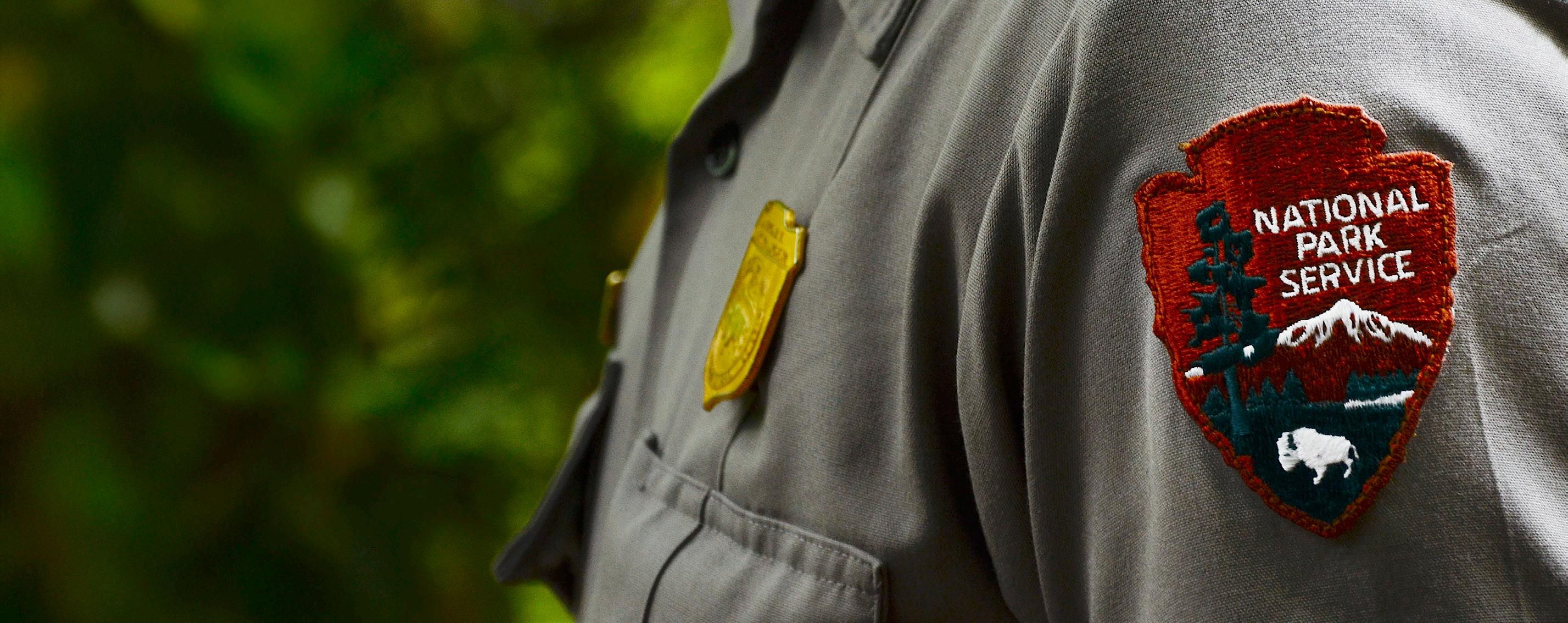
Every day throughout the summer, more than 250 people don the green and gray National Park Service uniform in Great Smoky Mountains National Park. Each plays a vital role in serving the millions of people who visit this beloved park over the course of the season. From swearing in the newest crop of Junior Rangers to adding to the scientific knowledge of these incredibly diverse montains to embarking on demanding and sometimes dangerous search and rescue missions, Smokies staff are an indispensable part of what makes the Smokies so great.
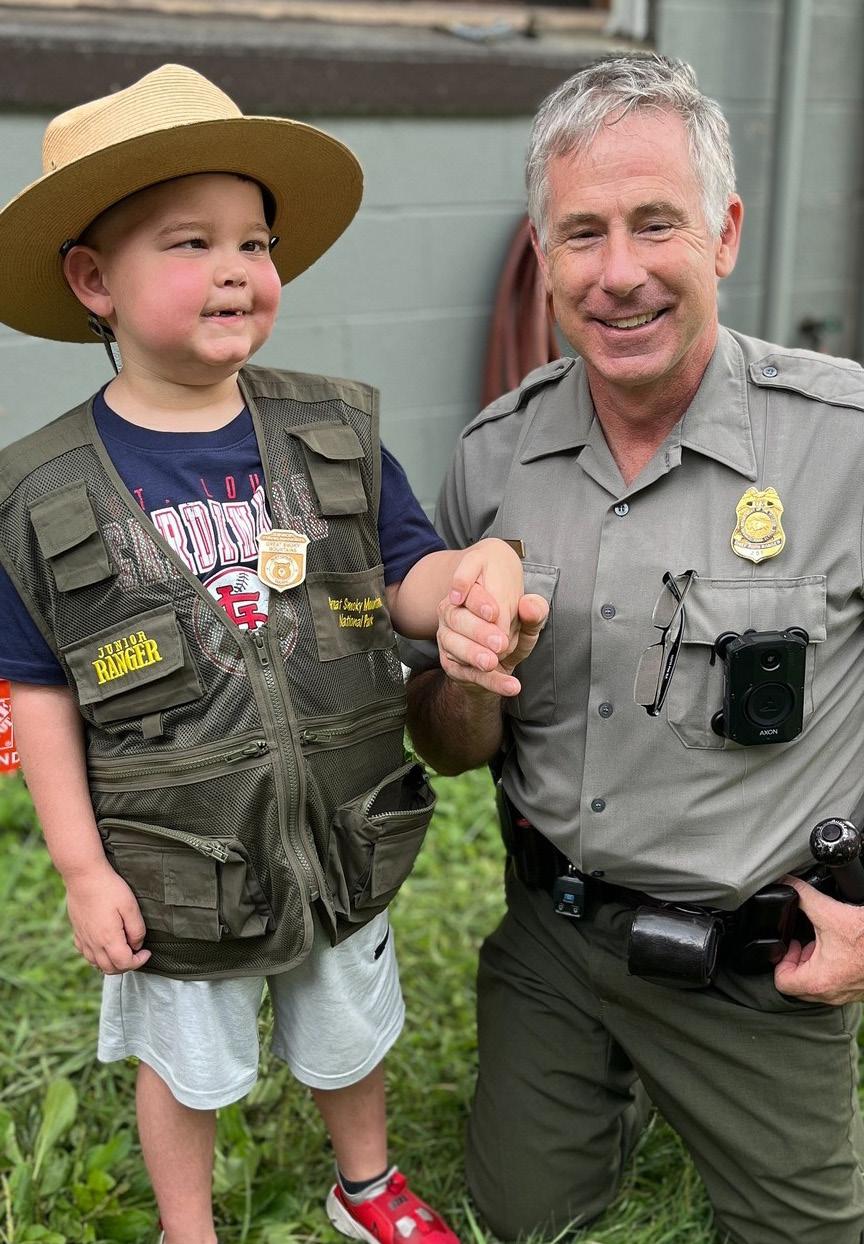
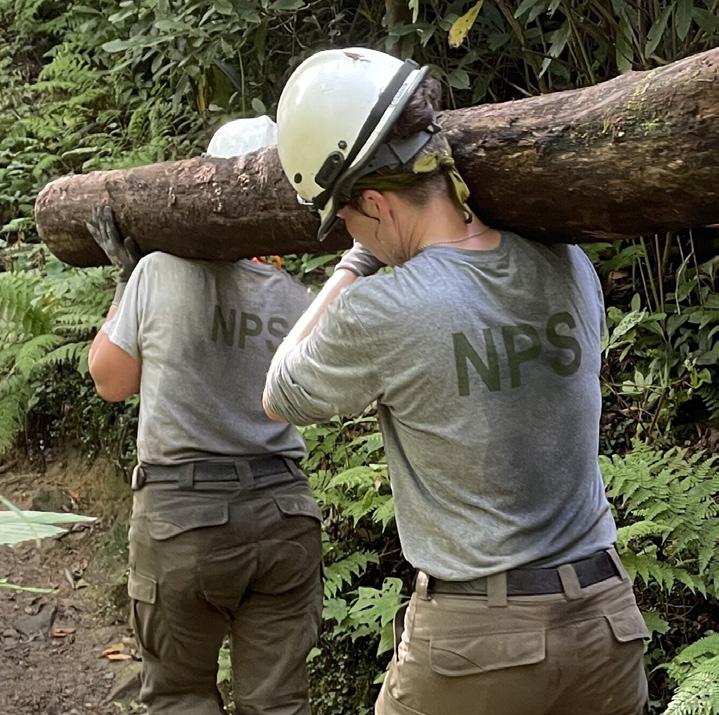

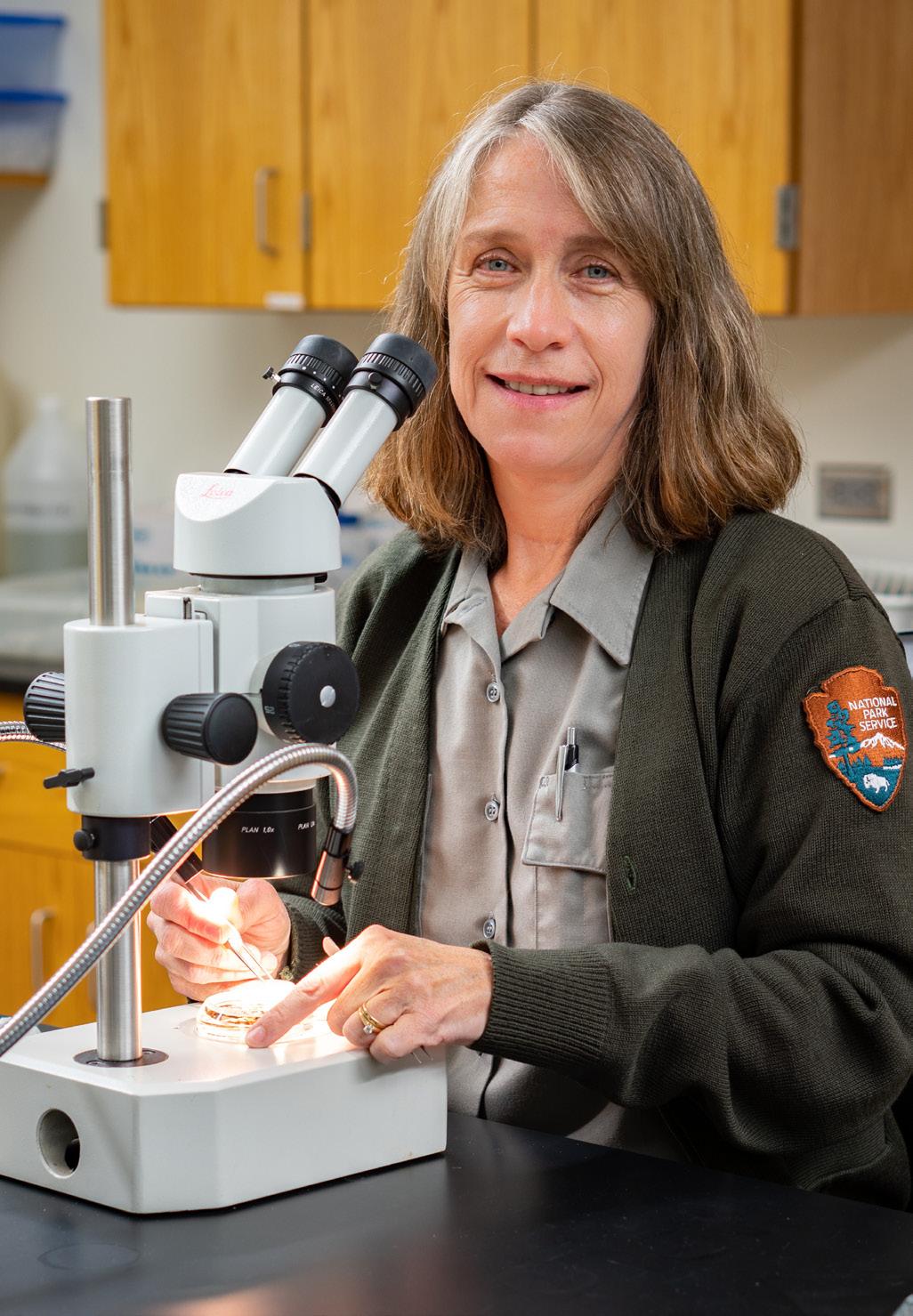
Adventure awaits all visitors in Great Smoky Mountains National Park, regardless of ability or accessibility needs. Through a partnership with Catalyst Sports, the park will offer three ranger-led adaptive excursions this summer, with a free wheelchair checkout program allowing visitors to explore the park on their own schedule.
Registration is required for ranger-led programs to ensure adequate availability of volunteers and equipment, and group size is limited. Registered participants may also bring their own adaptive equipment. Planned programs, each approximately two hours in length, are shown in the green table to the right.
Through September, park visitors can also borrow a GRIT Freedom Chair at no charge to explore approved trails within the park. These manual, offroad-capable wheelchairs are designed to navigate uneven terrain, including grass and hiking trails. Adult chairs have an 18-inch seat width, and junior chairs have a 12-inch seat width.
These chairs are available to qualifying visitors on a first-come, firstserved basis Mondays and Tuesdays at Sugarlands Visitor Center near Gatlinburg and can be reserved ahead of time for specific park trails Wednesdays, Fridays, Saturdays, and Sundays. To ensure safety, users must have a companion with them while using one of the chairs. This can be either a park volunteer or a friend or family member.
To learn more about adaptive programs and chair rentals, or to register, visit CatalystSports.org/great-smoky-mountain-adaptive-hike-bike


Tsummer, rangers, professional American Sign Language interpreters, and ASL students will present six programs throughout the park. No reservations are required for these family-friendly programs.
Parking tags may be purchased at locations designated by these symbols on the map: Automated Fee Machine (AFM)
• Available 24 hours per day
• Accepts credit/debit only
• Daily and weekly tags only
Located at Sugarlands Visitor Center, Cades Cove Loop Entrance, Metcalf Bottoms Picnic Area, Newfound Gap, Oconaluftee Visitor Center, Deep Creek Picnic Area, Kuwohi (formerly Clingmans Dome), Greenbrier, Cosby, Big Creek, Townsend Wye, Look Rock, and Cataloochee.
• Open business hours (see page 2)
• Accepts cash or credit/debit
• Daily, weekly, and annual tags available
Located at Sugarlands, Great Smoky Mountains Institute at Tremont, Cades Cove, Oconaluftee, and Kuwohi (formerly Clingmans Dome).
Parking tags are available outside the park at Great Smokies Welcome Center in Townsend, Gatlinburg Welcome Center, Swain County Visitor Center in Bryson City, and select area businesses.
For all purchase locations, see go.nps.gov/grsmfees.
Heintooga/Round
Cove
Ranging from leisurely quiet walkways to challenging mountain ascents, maintained trails in Great Smoky Mountains National Park cover more than 800 miles. There’s something for everyone in the park’s expansive backcountry, but preparation is key for a safe and enjoyable adventure. Be sure to bring rain gear, layers, water, snacks, and a map when you leave the trailhead, and always follow all posted rules and regulations.
Pets are permitted on only two trails in Great Smoky Mountains National Park. If kept on a leash no longer than six feet, pets are allowed on the Gatlinburg Trail near Sugarlands Visitor Center in Tennessee and the Oconaluftee River Trail near Oconaluftee Visitor Center in North Carolina. Your properly restrained four-legged friend can also accompany you at frontcountry campgrounds and along roads.
For more pet-friendly hiking options, consider exploring the national forests surrounding the Smokies. Sections of Cherokee National Forest to the west and northeast are great options with many trails to choose from, as are Pisgah National Forest to the northeast, Nantahala National Forest to the south, and Joyce Kilmer-Slickrock Wilderness and Citico Creek Wilderness to the west. You can also find and compare dozens of pet-friendly trails using the AllTrails app and the “dog-friendly” search filter. Some of these areas did receive significant damage from Hurricane Helene, so be sure to visit the forest website or call a district ranger office to learn more about current trail conditions before starting your trip.
Download a free copy of the park’s trail map at nps. gov/grsm or purchase one for $1 at a visitor center or kiosk. Photos by Michele Sons (top) and NPS (bottom).

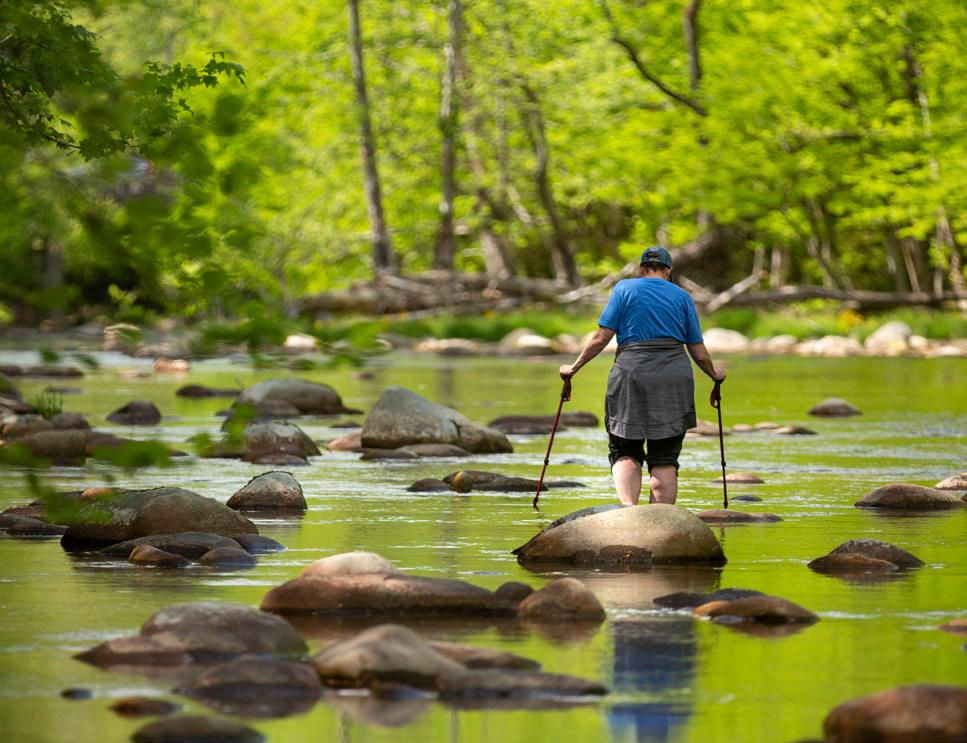
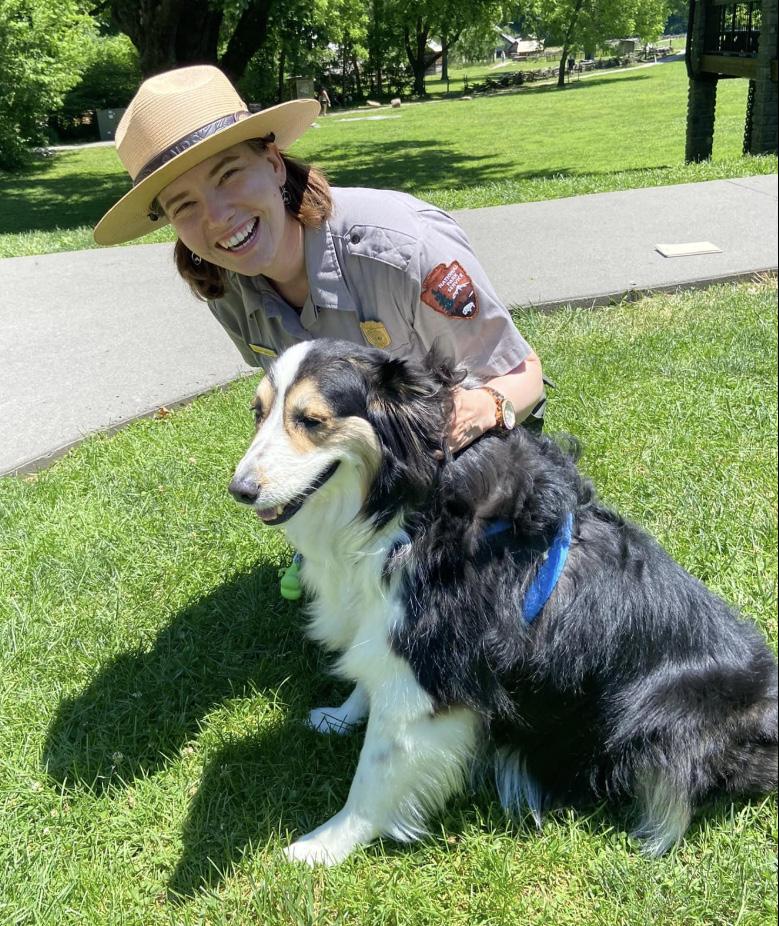
Cool off by a mountain stream this summer and try your hand at hooking one of the five species of game fish found in the park. The Smokies offer a variety of angling experiences, including about 580 miles of streams supporting wild trout populations. Bait is prohibited, and a North Carolina or Tennessee license is required. Grab a free fishing map to get a lay of the land and brush up on park rules or purchase the Fishes of the Smokies field guide at a visitor center bookstore. Photo by Ryan Hagerty.

Help scientists gather important information about plants and animals by using the free iNaturalist app while visiting the park.
1 Get the iNaturalist app
Download the app. Log in. Try it out.


2 Record life you find in the Smokies
Find a cool organism. Take photos or sound recordings. Post it to iNaturalist. Repeat. Find the Smokies Most Wanted

Up for a challenge? Look for the target species (like this common green darner) in the Smokies Most Wanted guide. Find the guide and more at dlia.org/smokiesmostwanted.


• Traction support like microspikes and hiking poles
• Navigation —map, compass, and knowledge of how to use them
• Water and food
• Extra layers
• First aid kit
• Headlamp or flashlight
• Rain gear and pack cover or waterproof bags
• Emergency whistle
• Sun protection with sunscreen, sunglasses, and hat
• Repair kit with multi-tool or knife
• Fire starter
• Shelter —emergency tent or tarp
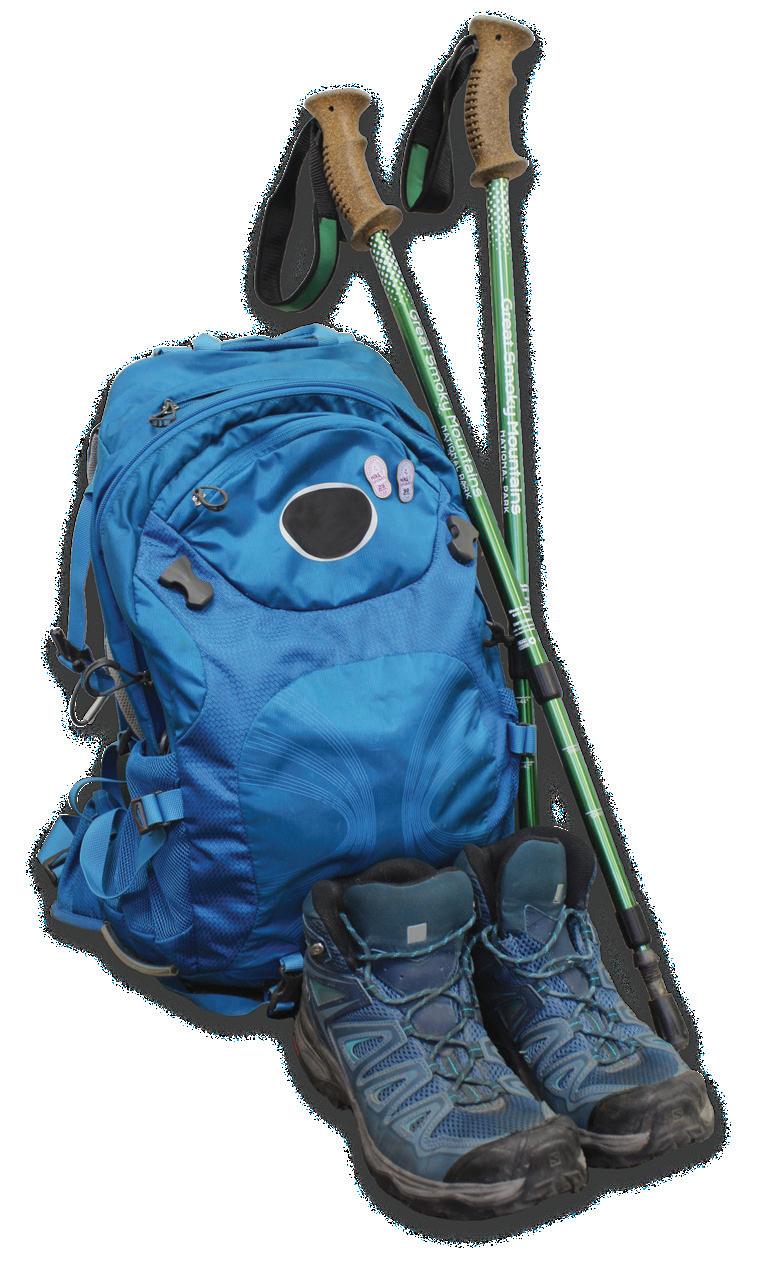
Tell someone where you’re going, stay on established trails, pack the essentials, and know what to do in case of an emergency. Let the NPS Backcountry Office help you plan and prepare for your hike. Call 865.436.1297, 8 a.m.–5 p.m.
• Call 911 if you can acquire a signal.
• Remain with any injured parties until help arrives. Use what basic first-aid techniques you know, but do not attempt invasive intervention unless you are medically trained.
• Use an emergency whistle to issue a series of three spaced blasts every few minutes to alert rescue crews. If you are in an open area, display brightly colored clothing or gear.
YOUR CELL PHONE IS NOT
• a strong light source
• always going to have service
• always going to have battery
Words with a Ranger
Continued from page 1
overnight backcountry backpacking excursion.
Even if you can’t take part in a program, you can check out an adaptive chair to use with your family or with a volunteer on almost 14 miles of hiking trails. We hope to continue expanding trail offerings. One junior and three adult-sized off-road wheelchairs are available for use on trails where the equipment can be used safely. Reservations are recommended. Ask at a visitor center for additional details or reserve your chair from June through September on the park website.
This year the park plans to host three hikes and two mountain biking programs, plus a kayak, night hike, and overnight backcountry camping experience using adaptive equipment. Visitors of all abilities are welcome. We are excited that these programs are increasing in popularity.
Thanks to the work of Ranger Jeanine Ferrence, the park plans to host certified American Sign Language interpreters and park rangers alongside one another to provide interpretive programs this summer for the hearing impaired. See page 7 of this guide for details.
These programs wouldn’t be possible without our community partners and volunteers. We are so grateful for their dedication.
These opportunities remind me why I truly love sharing our park. National parks belong to the people, and we want everyone to enjoy their national park and share them with the next generation. The work I do today, making sure visitors of all abilities are able to participate, is the MOST fulfilling part of my long career. It is an honor and privilege to serve in Great Smoky Mountains National Park.
Writing on or carving into trees, stones, or structures can cause permanent damage—it’s also a crime! Taking a photo is always a better way to remember your time in the Smokies and helps preserve the park for others too.

Help protect bears by packing out all trash and food waste and using bear-proof dumpsters in the park.





Remember that the Gatlinburg Trail and Oconaluftee River Trail are the only pet-friendly trails in the park. All pets must be kept on a leash no longer than six feet at all times.

Use only heat-treated or dead and down wood within the park. Harmful pests can hitchhike into the park on your firewood, which could kill millions of trees.
ALWAYS USE THE RULE OF THUMB


When viewing wildlife, hold your arm out straight. If you can’t cover the animal in your line of sight with your thumb, you’re too close!

Help protect this special place for future generations! Consider joining our nonprofit park partners described on this page. They, along with over 1,600 volunteers, help serve park staff and address many needs across the park’s 522,000 acres, maintaining this natural resource for millions like you who visit each year.
As the park’s philanthropic partner, Friends has raised more than $90 million to give to the park since 1993, helping:
Great Smoky Mountains Institute at Tremont is an environmental education center inside the park that connects people to nature through immersive, multi-day experiences. The institute promotes curiosity and inspires learning for thousands of students and adults each year.

Smokies Life operates the park’s bookstores and publishes books and other media about natural and cultural resources. Since 1953, Smokies Life has given more than $54 million toward scientific and historic preservation efforts. Members, known as Park Keepers, stay informed through:
• a subscription to the award-winning semi-annual, full-color Smokies Life Journal
• digital access to this quarterly newspaper and the Smokies LIVE blog, which includes “Word from the Smokies”
• 15 percent off books and other products at visitor centers and on the web store
• access to expert-led group hikes, backpacking excursions, and educational sessions
Join today by visiting SmokiesLife. org , or call 888.898.9102, ext. 257.

• Trails Forever crews improve trails
• Forever Places crews preserve historic structures
Adult programming includes the Southern Appalachian Naturalist Certification program, photography courses, a writer’s conference, backpacking adventures, professional development for teachers, wilderness first responder training, and a naturalist-led adult summer camp.









• protect bears, elk, and other animals
• supply search and rescue crews with training and equipment
• improve park access for people with mobility needs
• fund educational programs and transportation for school children
• monitor air and water quality while restoring native species’ habitat
• protect trees from invasive insects Friends raises money through events, business sponsorships, memorials and honorariums, private gifts, and specialty license plate sales in North Carolina and Tennessee. Visit FriendsOfTheSmokies.org to donate.

Youth summer camps and school field trips allow kids ages 4 to 17 (and sometimes their families) to explore the national park for days at a time and connect with nature through new, empowering, discoveryoriented experiences.
Visit GSMIT.org for program information. Photo by Rich Bryant.

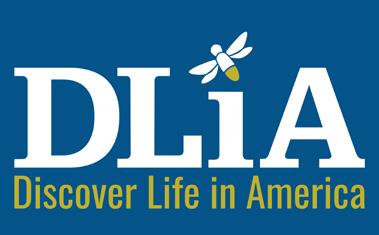
Since 1998, DLiA has collaborated with the National Park Service, scientists, and community members on the All Taxa Biodiversity Inventory. This ambitious effort aims to identify every species living in the park and understand their roles in relation to one another and within the ecosystem.
The ATBI has documented more than 12,000 species previously unrecorded in the Smokies, including over 1,000 new to science. This research informs critical conservation decisions.
DLiA engages people of all ages through outreach and education programs, inspiring stewardship of the natural world and fostering the next generation of nature advocates. Learn more and join the effort at DLiA.org
Record life in the park with the iNaturalist app! DLiA.org

25 0 13 5 species
+ 2, 90 0 + species
3, 50 0 species of f
500,000
miles of streams
84 8 miles of tr


Explore a stream to find all the places tiny things can live. Be gentle with the creatures you find. If you move any rocks, carefully put them back where you found them. Draw or write about what you see. How are the creatures that you found alike? How do they differ from one another?

This activity is adapted from great smoky mountains national park’s jUNIOR ranger activity guide! work as a team to fill out the guide and earn a jr. ranger badge. available at any park visitor center!
CAUTION: Some regional roads have closures or delays due to damage from Hurricane Helene. Check smartway.tn.gov/traffic and drivenc.gov for up-to-date information.
(closedinwinter)

Information
General park info:
865.436.1200
nps.gov/grsm
Backcountry info:
865.436.1297
smokiespermits.nps.gov
Emergencies 911 Cherokee Police
828.497.4131
Gatlinburg Police
865.436.5181
Avoid the fine
A valid parking tag must be displayed when parked for more than 15 minutes anywhere in the park. Pets are permitted only on the Gatlinburg and Oconaluftee River trails, which allow dogs on a leash. Persons feeding wildlife are subject to a $5,000 fine. Picking or digging plants is prohibited in the park.
Accessibility
Restrooms at Cades Cove, Oconaluftee, and Sugarlands visitor centers are fully accessible. For more information about accessibility, go to nps.gov/grsm/planyourvisit/accessibility.htm.